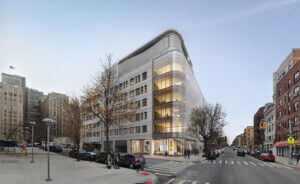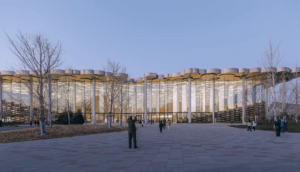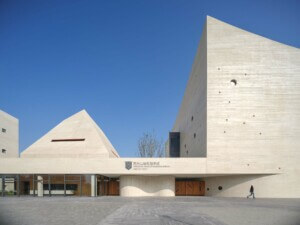It’s no secret that China continues on a trajectory of continued urbanization, placing strain on already-overcrowded cities. To help alleviate this congestion, Kohn Pedersen Fox Associates (KPF) has designed a 120 million-square-foot master-planned new city in China’s Hunan Province called Meixi Lake. The new city is centered around a large, 2.4-mile-long lake and will one day be home to some 180,000 residents.
As China’s urban population grows (with over 200 cities expected to house 1 million or more people each by 2030) new cities are seen as a way to relieve the strain on already built ones. “Over the last 10 years, China’s cities have grown in two ways: by increasing density within the historical cores, and by adding new cities adjacent to the old,” KPF Design Principal James von Klemperer said in a statement. “In such a new town, like Meixi, we can introduce integrated urban innovation: we can combine water transport with localized energy production, cluster neighborhood centers, advanced flood prevention and water management, and urban agriculture.”
But creating an entirely new city from scratch can be a daunting challenge. Architects are making extra efforts to ensure that these new developments are not prescribed and sterile, designing environments with sustainability at their core. In new cities like Meixi Lake, the built environment responds directly to residents’ needs with varying housing options and mixed-used buildings.
With a clear centering around the central lake—what KPF calls a “central park” for Meixi—the master plan merges the natural and built environment making sure one never outweighs the other. Water is filtered from the 100-acre lake. High-rise buildings of the central business district surrounding the lake are connected with a pedestrian tram, lessening the amount of cars on the street. KPF also plans collective gray and black water systems, energy plants, and urban agriculture to reduce pollution and enhance sustainability. “Environmental sustainability is crucial to a city’s longevity. China is growing beyond its environmental capacity and has limited natural resources and fresh water,” KPF Managing Principal Richard Nemeth noted in a statement. “We were able to rethink the typical urban elements that needed improvement and implement them in this completely new city.”
Neighborhoods have been imagined as village centers and are clustered at about 10,000 people and are linked by green parks. Every uniquely-designed neighborhood enclave is complete with a school, shopping district, and civic buildings.










